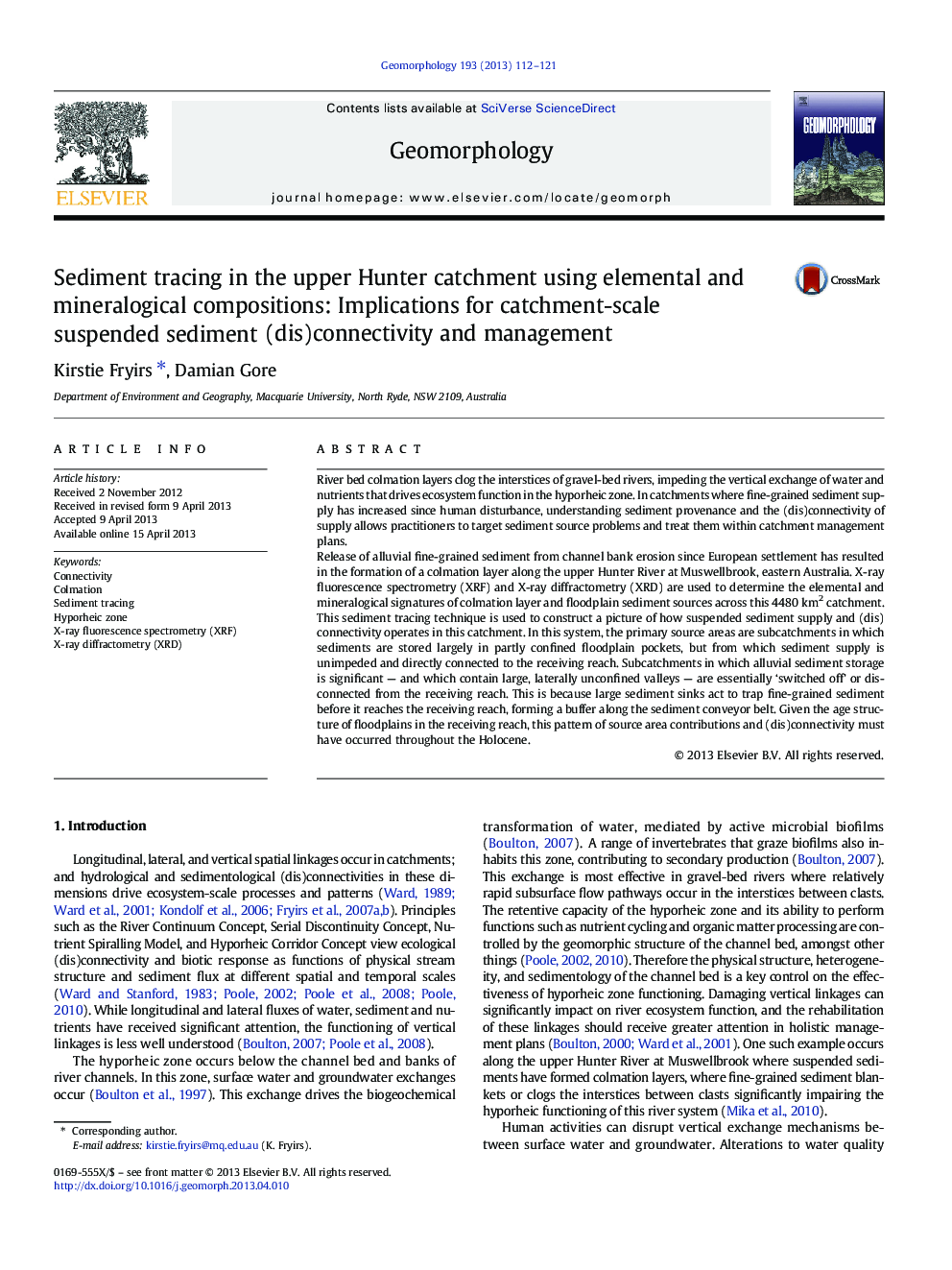| Article ID | Journal | Published Year | Pages | File Type |
|---|---|---|---|---|
| 4684880 | Geomorphology | 2013 | 10 Pages |
River bed colmation layers clog the interstices of gravel-bed rivers, impeding the vertical exchange of water and nutrients that drives ecosystem function in the hyporheic zone. In catchments where fine-grained sediment supply has increased since human disturbance, understanding sediment provenance and the (dis)connectivity of supply allows practitioners to target sediment source problems and treat them within catchment management plans.Release of alluvial fine-grained sediment from channel bank erosion since European settlement has resulted in the formation of a colmation layer along the upper Hunter River at Muswellbrook, eastern Australia. X-ray fluorescence spectrometry (XRF) and X-ray diffractometry (XRD) are used to determine the elemental and mineralogical signatures of colmation layer and floodplain sediment sources across this 4480 km2 catchment. This sediment tracing technique is used to construct a picture of how suspended sediment supply and (dis)connectivity operates in this catchment. In this system, the primary source areas are subcatchments in which sediments are stored largely in partly confined floodplain pockets, but from which sediment supply is unimpeded and directly connected to the receiving reach. Subcatchments in which alluvial sediment storage is significant — and which contain large, laterally unconfined valleys — are essentially ‘switched off’ or disconnected from the receiving reach. This is because large sediment sinks act to trap fine-grained sediment before it reaches the receiving reach, forming a buffer along the sediment conveyor belt. Given the age structure of floodplains in the receiving reach, this pattern of source area contributions and (dis)connectivity must have occurred throughout the Holocene.
